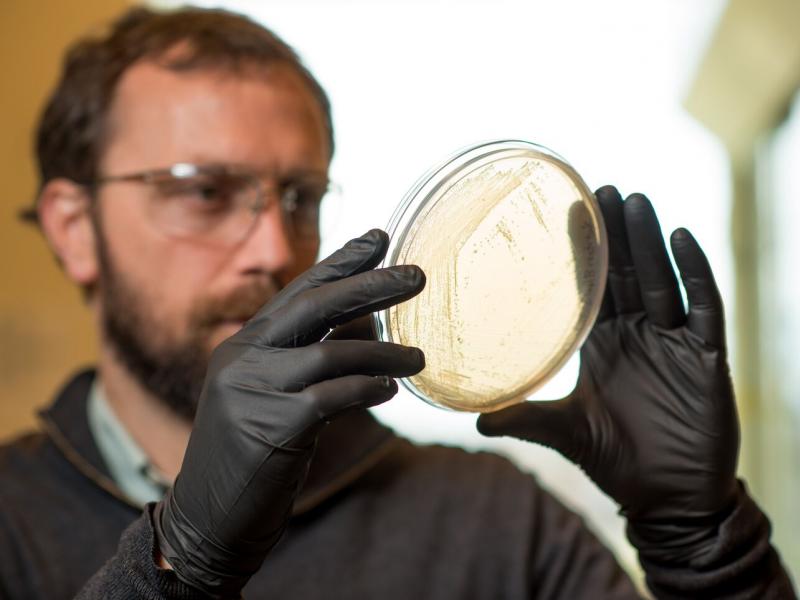Synthetic Biology
Synthetic Biology
Bio-inspired engineering
Bio-inspired engineering
Biological systems are complex, but when broken down into smaller parts, we can better understand how and why those parts operate the way they do and decide if we can use them in a different way. Doing synthetic biology with microorganisms beyond standard bacteria or yeast is where PNNL researchers are making their mark.
(Image by Jeff London | Pacific Northwest National Laboratory)
Some of the world’s food, fuel, materials, and health challenges could be addressed by harnessing and controlling natural processes. More resilient crops could curb food shortages while sequestering atmospheric carbon underground; biofuel could be produced from agricultural waste; concrete and textiles could be produced without increasing our carbon footprint; and pathogens could be discovered before they have a chance to cause harm—all with the help of synthetic biology.
It all starts with collecting and applying knowledge about nature’s biological systems—an area of research in which Pacific Northwest National Laboratory (PNNL) has decades of experience—to inspire new, bioengineered systems that scientists can construct or manipulate to address global challenges.
Biological systems are complex, but when broken down into smaller parts, we can better understand how and why those parts operate the way they do and decide how we can use them for engineering purposes. Doing so with microorganisms beyond standard bacteria or yeast is where PNNL researchers are making their mark.

Foundations for synthetic biology
We generate microbial biomass by growing very different bacteria together in a co-culture system developed at PNNL. The bacteria have complementary metabolism, so that one species generates oxygen that the other needs to convert methane to more microbes. The result is an energy-rich substance that scientists can transform into biofuels and bioproducts, such as plastics.
We manipulate microbes to engineer sustainable plant ecosystems for food and bioenergy production—even amidst extreme environmental changes. By studying the microbes and minerals surrounding plant roots, PNNL scientists uncover processes in the rhizosphere that can be controlled to enhance root growth or plant resilience through drought.
A tried and true process for synthetic biology
Using a design, build, test, and learn model, we re-imagine and build biological systems at the benchtop. Then our scientists apply multi-omics and microscopy analyses to characterize the details of the new system’s functionality at a molecular level. What they learn they feeds back into the cycle, making novel improvements to the engineered system.
Starting with a community of soil microbes, our researchers combined expertise in soil microbiology, proteomics, chemical biology, and data analytics to develop a system that identifies potentially harmful bacteria to automatically scan thousands of fluorescence microscopy images.
Finally, we’re exploring how to safely deploy engineered soil microbes to improve the health of bioenergy crops, such as sorghum, while also improving soil in arid environments. These designed ecosystems would be designed to only function and survive among the roots of target plants, so that the engineered microbes stay where they’re needed, while contributing to sustainable bioproduction and climate adaptation.
Scientific instrumentation in PNNL’s Biological Sciences Facility, as well as the Department of Energy’s Environmental Molecular Sciences Laboratory, are a tremendous resource for our synthetic biology work.
Click to view our team of experts who focus on synthetic biology research in the Biology Division and the Environmental Molecular Sciences Division.